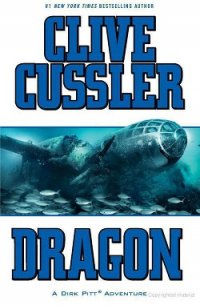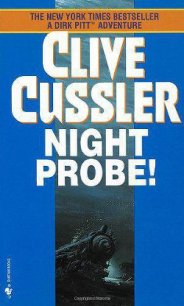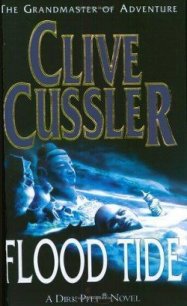Black Wind - Cussler Clive (книги полностью бесплатно txt) 📗
geared primarily for satellite telecommunications operators. The American aerospace giant Boeing was the prime founder, signing on to handle launch operations as well as integrating the customer's satellite payloads into the rocket housing. Turning swords into rubles, a pair of Russian companies joined the consortium by providing the actual rockets, or “launch vehicles,” as they are known in the parlance. Ex-military rockets that once carried nuclear warheads, the Zenits were tried-and-true launch vehicles that were perfectly suited to commercial applications. But it was a Norwegian firm, Kvaerner, that provided perhaps the most unique asset to the venture. Starting with a used North Sea oil platform, the Oslo firm constructed a self-propelled floating launchpad that could be positioned for launching in almost any ocean waters of the world.
Though an interesting selling point, practicality dictates that there is only one area on the globe worth launching from and that is the equator. For a geosynchronous satellite, which remains in a fixed relative orbital position following the earth's rotation, there is no more direct path to orbit than from the equator. Less rocket fuel burned in pushing a satellite to orbit can allow for a heavier satellite payload. Satellite owners, seeking to maximize revenues from their multimillion-dollar investments, can thus add more capacity to their satellites or additional operating fuel to extend the satellite's life. Integrating the satellites into the launch vehicle in Long Beach, then sailing the rocket to the equator for launch had grown from an intriguing idea to an efficient business model in the high-stakes, high-risk game of commercial space operations.
A handheld Motorola radio fastened to Stamp's belt suddenly cackled with static. “Rollout complete. Ready for crane hook-up,” barked the unseen voice. Stamp paused and studied the Zenit rocket, which protruded from the ship's stern like a stinger on a wasp. In an unusual bid for flexibility, the Sea Launch team actually assembled the rocket and its payload in the bowels of a custom-fitted ship named the Sea Launch Commander. Officially known as the “Assembly and Command Ship,” the 660-foot cargo-designed vessel contained myriad computer bays on its upper deck, as well as a mission operations command center, which directed the complete launch operation at sea. On the lower deck was a cavernous assembly compartment that housed the Zenit rocket components. Here, an army of white-smocked engineers and technicians bolted together horizontally the segmented Russian rocket sections utilizing a rail system that ran nearly the length of the ship. Once the rocket assembly was complete, the mission satellite was encapsulated into the upper-section payload fairing and then the entire launch vehicle was rolled at a snail's pace out the stern of the Sea Launch Commander.
“Proceed with hookup. Transfer when ready,” Stamp spoke into the radio with a slight Midwestern accent. He glanced up at a huge crane system built onto the edge of the towering launch platform. A pair of tilted M-shaped trusses extended off one end of the platform, dangling several lines of thick cable. The floating platform, christened Odyssey, had been positioned just aft of the Sea Launch Commander, its crane system hanging directly above the prone rocket. The crane's winch lines were silently dropped down to the launch vehicle, where teams of engineers in hard hats attached the cables to a series of slings and lift points along the length of the rocket.
“Sea Launch Commander, this is Odyssey” a new voice blared through Stamp's radio. “Ready to transfer launch vehicle.”
Stamp nodded to a short fellow standing beside him, a bearded man named Christiano who captained the Sea Launch Commander. Christiano spoke into his own radio.
“This is Commander. Proceed with transfer at will. Good luck, Odyssey.”
Seconds later, the cable lines drew taut and the horizontal rocket was lifted slowly off its cradle. Stamp held his breath as the Zenit rocket was hoisted high into the air until it hung suspended far above the decks of the Commander. The unfueled rocket was just a fraction of its launch weight, so the process was akin to lifting an empty beer can. But Stamp couldn't help feeling nervous watching the huge rocket dangling in midair above him.
After a tantalizingly slow rise to the top of the launch platform, the crane operations crew activated the movable winch and the launch vehicle was tugged horizontally into an environmentally controlled hangar on Odyssey's high deck. Once the tip of the rocket had cleared the hangar doors, the entire launch vehicle was gently nested down into a wheeled cradle. When the floating platform reached the designated launch site, the cradle device would roll the rocket out of its hangar and tilt it up on end for firing.
“Launch vehicle secure. Well done, gentlemen. The beers are on me tonight. Odyssey out.”
Stamp visibly relaxed, a broad grin spreading across his face. “Piece of cake,” he said to Christiano as if the outcome was never in doubt.
“Looks like we'll make the scheduled launch date in seventeen days after all,” Christiano replied as he watched the empty launch vehicle cradle slide back into the ship's lower-deck hangar. “The long-range weather forecast is still looking favorable. After final checks and fueling, the Odyssey can depart in four days and we'll follow in the Commander forty-eight hours later after additional spares and provisions are put aboard. We'll easily catch up with her before reaching the launch site.”
“A good thing, too,” Stamp said with relief. “There's a penalty clause in the customer contract that's a killer if we are late to launch.”
“Nobody could have predicted the dockworkers' strike would delay receipt of the Zenit rocket components by fifteen days,” Christiano said, shaking his head.
“The launch vehicle team did a heckuva job making up lost schedule. I'm not looking forward to seeing the overtime charges but the team must have set a record for assembly and integration. Even with our paranoid customer shielding the mission payload from everyone.”
“What's so terribly secretive about a broadcast television satellite?”
“Search me,” Stamp said, shrugging his shoulders. “Typical Asian lack Wind reticence, I guess. The whole operation doesn't make sense to me. They've got a relatively lightweight satellite that they could have easily launched off the Chinese Long March rocket for a couple of million dollars less than our fees.”
“Angst with the Chinese isn't an unusual sentiment in the Far East.”
“True, but usually overlooked when it comes to dollars and cents. Perhaps it's due to the head of the telecommunications firm. He's apparently a real maverick.”
“He owns the company outright, doesn't he?” Christiano asked, his eyes searching skyward trying to recall.
“Yep,” Stamp replied. “Dae-jong Kang is one rich and powerful man.”
Kang leaned back in the padded leather chair of his cherry-wood study and listened intently as a pair of engineers from his Inchon facility provided a technical briefing. Tongju safsilently at the back of the room, his dark eyes scrutinizing the men out of habit. One of the engineers, a slight, disheveled man with glasses and a deeply receding hairline, spoke to Kang with a raspy voice.
“As you know, the Koreasat 2 satellite was delivered to the launch provider's facility approximately three weeks ago, where it was encapsulated inside the payload fairing, or nose cone section, of the Zenit rocket. The entire launch vehicle has since been loaded onto the self-propelled launch platform, which is preparing for departure to the equator.”
“There have been no security lapses?” Kang asked, throwing a cold glance toward Tongju.
The engineer shook his head. “We've had our own security team protecting the satellite around the clock. The Sea Launch team suspects nothing. By all external appearances, the satellite is designated for television broadcast services. Now that the satellite is enshrouded in the rocket housing, there is little chance of suspicion.” The engineer swallowed a sip of coffee from an overflowing mug, spilling a few drops of the hot liquid on the sleeve of his worn checkered sport coat. The brown stain matched a similar pattern of spots on his tie.




